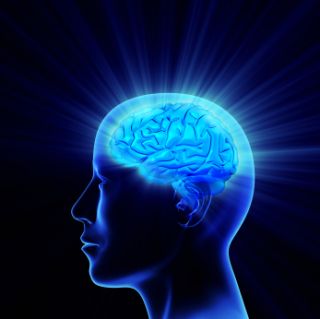The Different Levels/Layers Of Lucid Dreaming Explained.
Lucid dreaming comes in several different levels, it’s all related to the brain waves we experience while we’re sleeping. So, let’s find out a bit more about the different levels of lucidity and what they might mean for us.

The ability to control your dreams can open up a whole world of potential. With lucid dreaming, you can do anything you wish. And we mean anything! Lucid dreaming allows you to wake within your dream and control your actions in a unique way, so whatever your wildest fantasies, they can come true through your dream.
The different layers of lucidity explained
Let’s look at the different types of dream/lucid dream and explain what each one means.
1: A Non-Lucid Dream
Non-lucid dreams are dreams which you have absolutely no control over. These are the sort of dreams most people experience very regularly. Created entirely by the subconscious mind, a non-lucid dream is often based on a person’s inner-most desires, but it can also focus on a person’s fears or problems they may be experiencing in everyday life.
Non-lucid dreams will often find their basis in a person’s experiences or memories, but they are commonly only loosely based on these experiences, so they won’t follow an exact pattern.
A non-lucid dream is the polar opposite to a lucid dream. When experiencing a non-lucid dream, you are the furthest from consciousness that you can be. In the midst of a non-lucid dream, you might find that experiences feel incredibly powerful, but you cannot control how the plot of the dream pans out. This can give a person a feeling of helplessness, particularly if the dream happens to be based on their fears.
2: A Semi-Lucid Dream
It may come as no surprise to you that lucidity within dreams isn’t binary, in fact it operates on a sliding scale, so some dreams will feel incredibly lucid and give you complete clear control over the actions you undertake in your dream, whilst others might feel a little more hazy. You might find that you are aware you’re dreaming, but you’re not fully able to grasp control of the events as they unfold. This is what we call a semi-lucid dream.

In a semi-lucid dream you might become suddenly aware that you’re dreaming. This will probably mean you immediately try to take charge of the dream and turn it in a more favourable direction. Because you’re only semi-lucid, though, this could be problematic.
It’s possible that you could slip between a non-lucid and semi-lucid dream state several times, finding that at some moments you are able to control the dream, whereas at others you’re completely at the mercy of your subconscious. This might feel a little unnerving at first, but it’s a key part of the journey towards realising your own ability to experience complete lucid dreaming.
3: A Fully Lucid Dream
The fully lucid dream is the dream-state you’ll be able to achieve by learning more about lucidity and how to harness the power of your own dream. With lucid dreaming, you are in total control of what happens in your dream. And because it’s a dream, the world really is your oyster.
Lucid dreaming is an amazing tool because it lets you live out your wildest fantasies, and experience things you never could in real life. Take flying, for example. There’s no way you could fly like a bird in real life, is there? But with lucid dreaming, that’s an experience you could actually have!
There are other benefits to fully lucid dreams, too. It’s not just about living in a fantasy world! With lucid dreaming, you’re totally in tune with your subconscious mind. This is a powerful state to be in, because it enables you to really get to know your inner-most thoughts and desires.
ou can learn a lot about yourself just in one lucid dream. The human consciousness is incredibly complicated and many of us know little to nothing about our own subconscious, so finding out more about your subconscious can really benefit you in both body and mind.
When you’re in a lucid dream, you’ll also be able to unlock your full potential in other ways. Take creativity, for example. Lucid dreaming enables you to experience things you never could in real life, and could really spark a creative streak – even if you thought you never had one! Many of the world’s best creatives are known to be lucid dreamers; they attribute this unique skill to their ability to imagine the world in a totally different way to most people.
If you’re someone who loves to learn new skills, you’ll know that repetition is key to perfecting any artform. In lucid dreams, you have the ability to practise something new while you sleep. So you can literally improve your skills while you’re fast asleep!
Think about it, you could spend your sleeping hours brushing up on your public speaking skills as you prepare for a big presentation in the real world. Or you could learn something sporty, like snowboarding or even archery!
And the best part is, those skills you practice while you’re in the midst of a lucid dream fully translate into improvements in the world. How’s that for maximizing your potential? Pretty amazing, isn’t it!
4: Dissolving the dream state
Those who practice Tibetan dream yoga often report experiencing an even higher level of lucidity than your typical lucid dream. This is called ‘dissolving the dream’. Dissolving a lucid dream is the ultimate goal of Tibetan dream yogis.
Dissolving a lucid dream state isn’t quite the same as waking up, but it is similar. If you’re dissolving a lucid dream what you’re actually doing is looking past all the visual and sensory stimuli that you’re experiencing in your dream state, and focusing on your own consciousness and awareness. This is a great goal to work towards if you’re already experiencing lucid dreams regularly.





Comments
Post a Comment